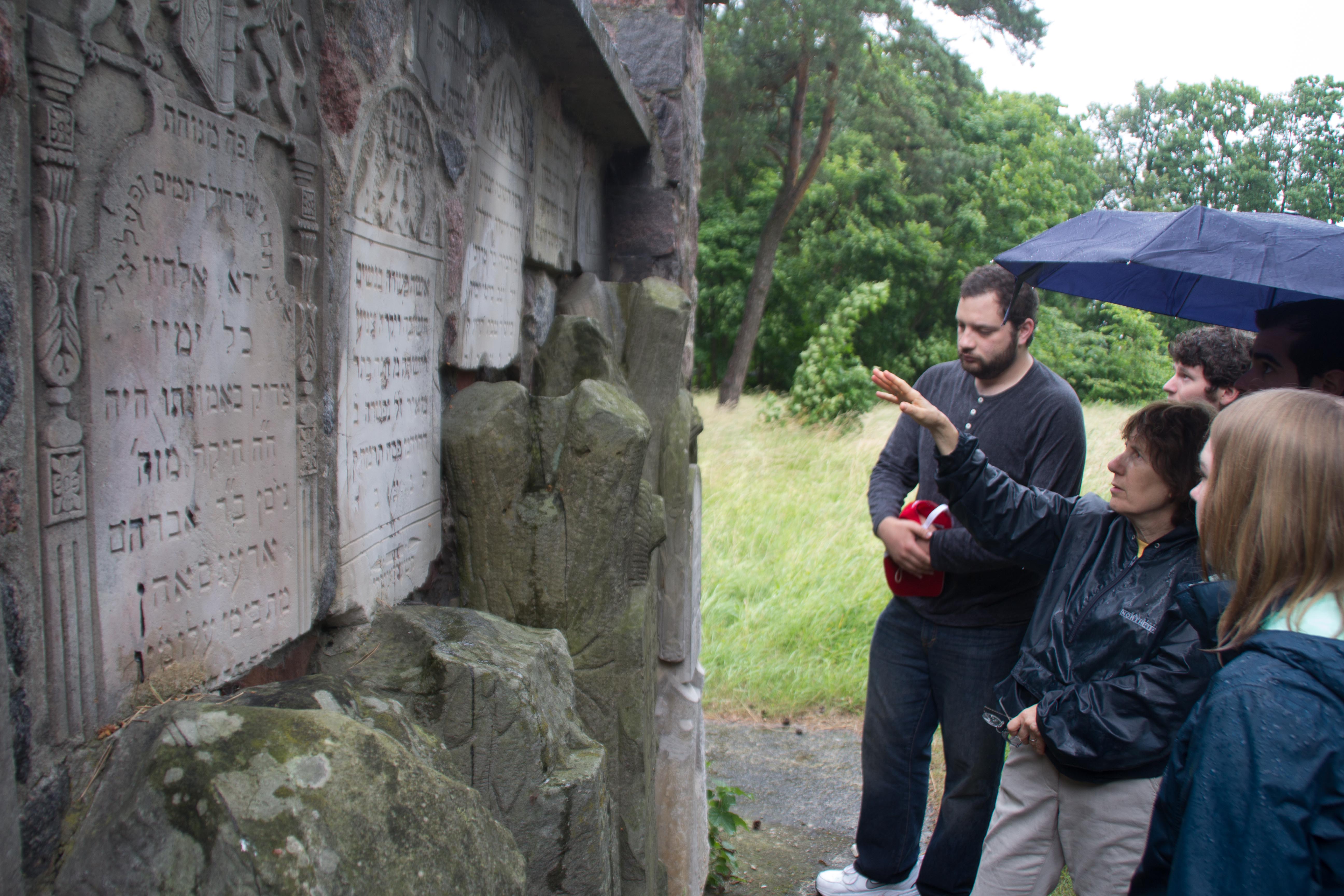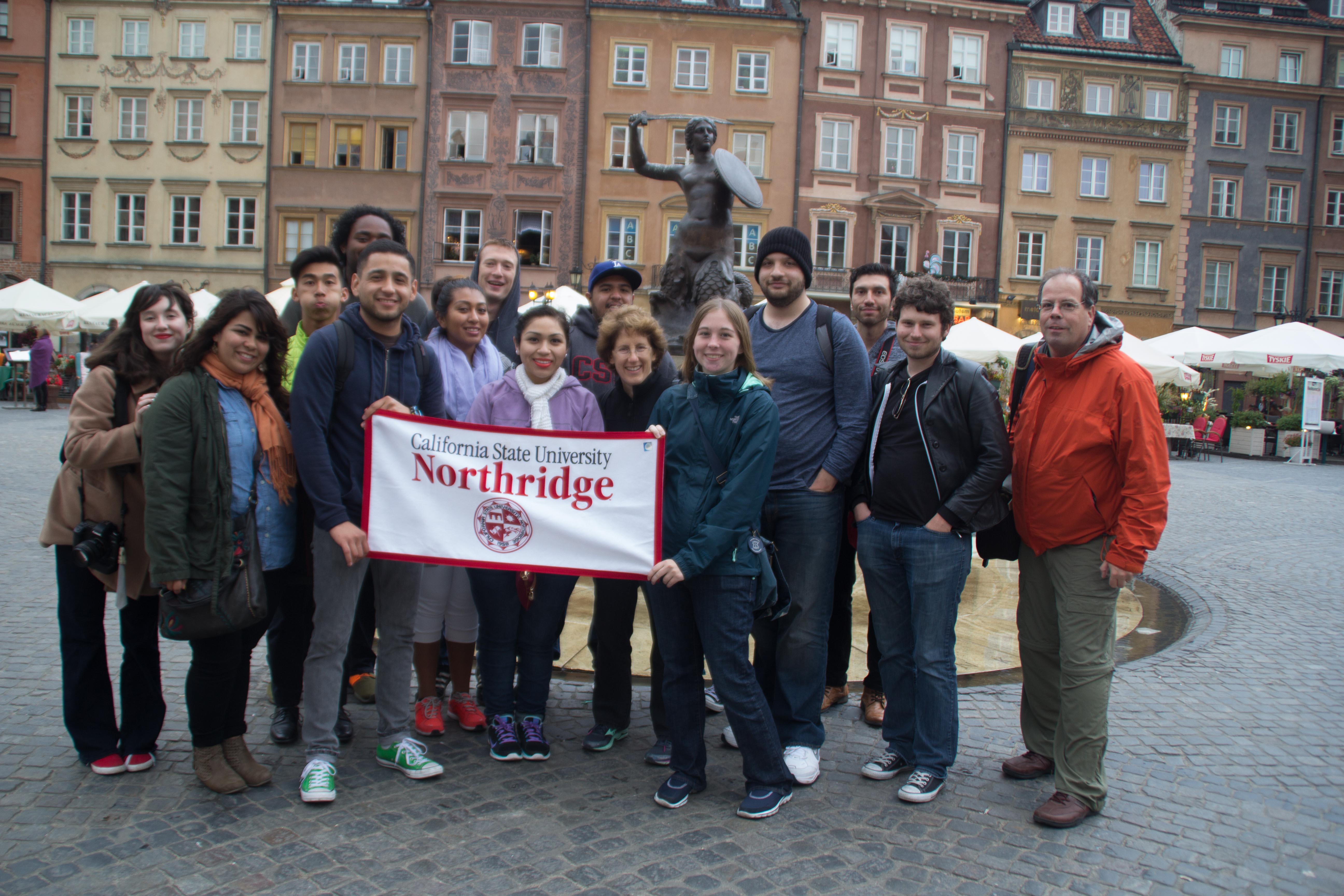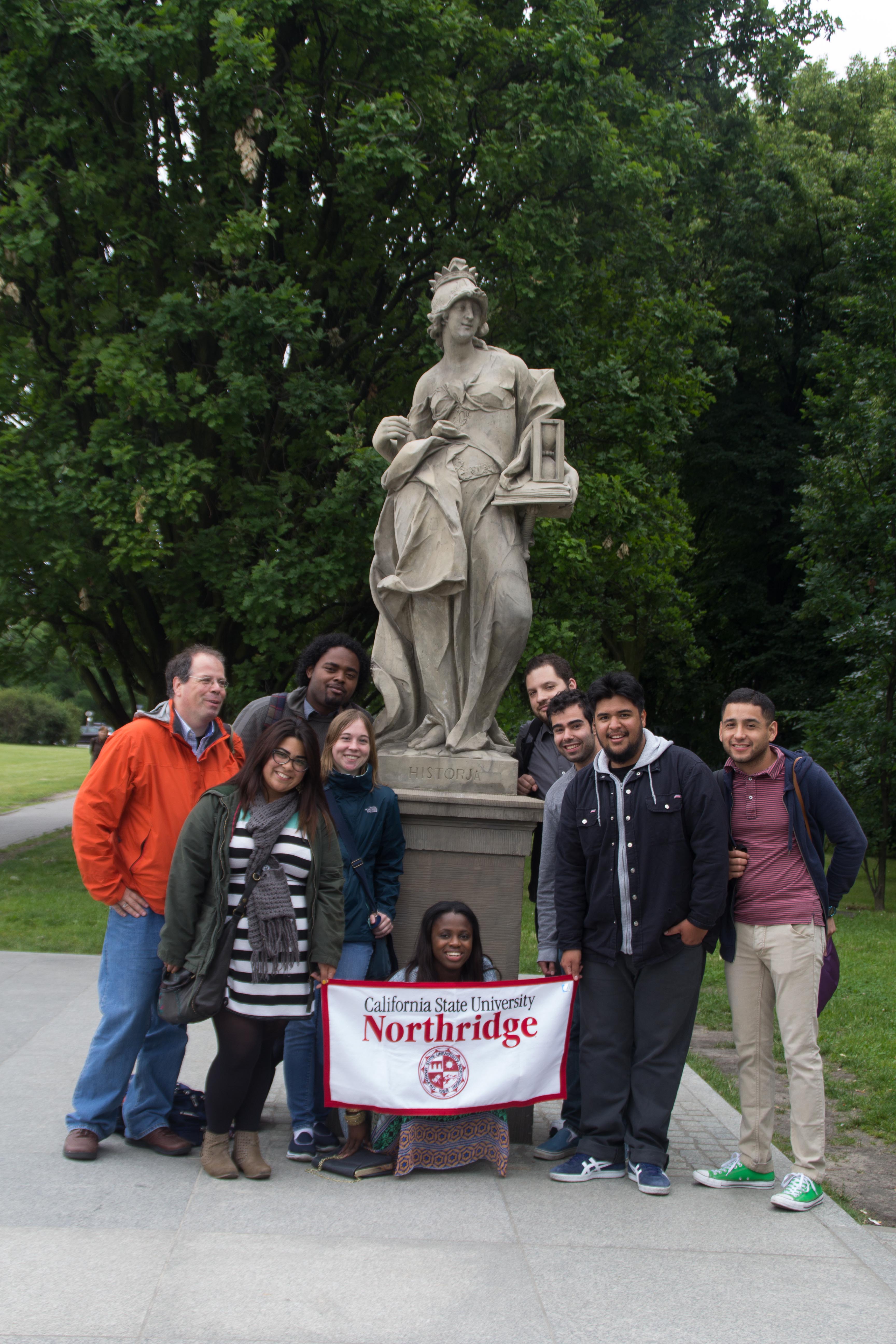European Trip Gives CSUN Students a History Lesson
A university education is all about learning how to expand understanding about the outside world. However, sometimes the learning done in a classroom can only develop that understanding so far before students have to experience it for themselves firsthand. California State University, Northridge associate professor of history Donal O’Sullivan knows this, which is why he’s made five trips to Europe with students to show how history — good and bad — can really come alive.
This past June, O’Sullivan led a trip to Lithuania and Poland with students — along with Jody Myers from the Jewish studies department — to further explore the region’s Jewish heritage and modern European history. This comes on the heels of his not-quite-yearly explorations of Europe: Berlin and Prague in 2008; Paris, Brussels and Amsterdam in 2009; Poland in 2011; Berlin and Poland in 2012. He believes these trips allow students from a variety of backgrounds a chance to understand the history and personally grow from confronting it.
“I hope that it gave them an understanding of the significance of history and the complexity of memory,” O’Sullivan said of the students, half of whom had never left the country before. “Together with the information our guides gave them, the students encountered many opportunities for personal growth, for example during the Shabbat services we attended or during the Corpus Christi procession in a Catholic Church.”
The group spent a year planning for the trip, which included finding affordable lodging and contacting museums and colleagues to announce they were coming (they also seek sponsors to support the trips). While it was open to students of any major, specific CSUN classes such as History of Twentieth-Century Europe prepared the students for the journey. That background helped them give presentations on a wide variety of topics under the general theme of the trip. This included discussion about events that happened on the sites they were visiting.
“While in Poland, we talked about subjects ranging from the Battle of Tannenberg in 1410 to what it is like to be Jewish in Warsaw today,” O’Sullivan said. “In Lithuania, we talked to Holocaust survivors and young Jews about their lives, and talked about how the memory of the Holocaust had changed from Soviet times to today.”
It’s an experience he believes is important for anyone wanting to truly understand the history of Europe. For some on the tour like history grad student Adam Morgenstern, however, it was a little more personal.
“This trip was very sentimental for me,” Morgenstern said. “My grandparents were born in Warsaw, Poland, and I am the first person in my family to have returned to the soil where they suffered from poverty and, as Jews, were victims of discrimination. I was able to travel there and to celebrate the changing of time, which included a new generation that welcomed me and allowed me to have such a valuable academic experience.”
“Here in Southern California, we are very far away from the historic legacy of Europe, and it is more difficult to teach about the events there,” O’Sullivan said. “Our ‘outdoor classroom’ allows students to see for themselves what a medieval city plan looks like, how Warsaw was destroyed during the war and rebuilt afterward — or what the only remaining synagogue in Vilnius, the former ‘Jerusalem of the East,’ looks like. The physical presence makes a huge difference to the learning experience.”
For more information about the trip, the group prepared a blog highlighting their visits. You can visit it here.






 experience
experience